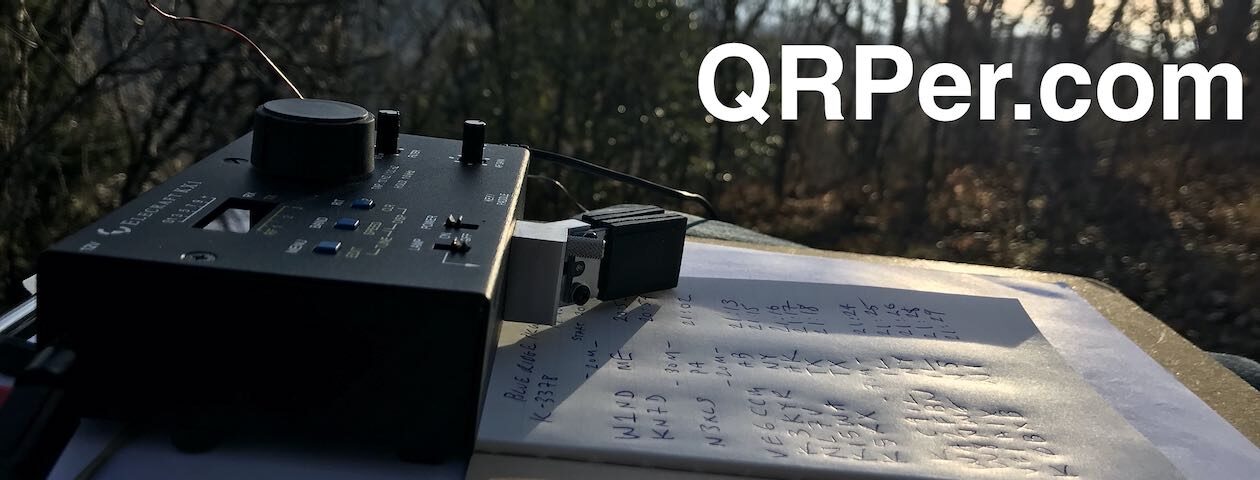Many thanks to Bob (K4RLC) who shares the following guest post:
Contesting – QRP CW and POTA Style – December 2024
by Bob (K4RLC)
In December, I did the ARRL 10 Meter Contest from Jordan Lake State Recreation Area US-3844, near Apex, North Carolina. This contest is not as competitive as some of the classics like the CQ WW CW or ARRL DX CW contests, so it can afford a person with a smaller station and/or less contesting experience a good time. As the contest is held the second week in December, it basically is a daytime-only contest since propagation is virtually nonexistent after dark on 10 Meters.
For this contest weekend, I had multiple competing personal and family activities. I chose Jordan Lake State Recreational Area (US-3844), about 30 miles from our house, so I could return to Raleigh Saturday night, then drive back Sunday.
I took our Winnebago Solis, the smallest Winnebago, as Alanna and I gave up tent camping a few years ago. The Solis is a wonderful camper van on a Dodge ProMaster chassis that sleeps three, has a propane-powered furnace and two-burner stove, and a refrigerator that can be powered either by propane or by the 140 W solar panels on top of the van, loading up two 100 amp-hour AGM batteries. You can boondock for days or enjoy the luxury of “shore power.”

I went out to Jordan Lake late Friday afternoon and set up an inverted V which I hoped would provide a bit of gain. I had big plans for building gain antennas for the contest (such as a Double Half-Square Curtain array or vertical Diamond), but for various reasons, this unfortunately didn’t happen. I also wanted to operate portable just as I do my POTA and SOTA activities and not from the home QTH. The rig was the Elecraft KX2, an outstanding rig that you can pound away on for a contest, just as we do with the Elecraft K3 on Field Day.
It was already dark when the contest started Friday night. While eating the stereotypical solo male dinner of Dinty Moore Beef Stew right out of the cooking pot (Alanna didn’t accompany me for this outing), I heard only two stations—big gun stations in my own county. However, the band came alive after sunrise Saturday, with the Western and Northwestern Europeans booming in. After trying the non-resonant inverted V, it soon became apparent I would need to use my fallback antenna: a 10-foot telescoping whip, no coil, on a tripod, resting on a 3’ x 7’ piece of screen wire from Lowe’s.
Quickly, I was working such diverse stations as Finland, Germany, Scotland, and Croatia. Despite being less intense than some contests, most stations were running between 30 and 34 words a minute. For the DX exchange, after a signal report, they give the serial number of your contact. This required some pretty intense concentration and listening for my old brain, particularly as I operated in the “Unassisted” category. That is, operating without use of a computer or any other spotting and/or decoding devices. Instead, all my decoding occurred strictly between the ears—the original decoder—helped by lots of strong coffee from a Stanley French Press Coffee Maker our daughter Lauren KA4LHC gave me. Logging was with an old legal pad and Bic pen.

I was amazed at how well I did with 5 watts and the KX2. In the early stages of contests, contesters are avid to make as many easy contacts as possible and typically will give up on a harder-to-copy low-power station after one or two tries and move on. On my end, I had to try multiple times for a station to copy my call, which really slowed down my QSO rate. GM5X in Scotland was kind and patient enough to take five tries to get my call and exchange. Enjoying the beautiful park site and making good contacts, the morning quickly morphed into afternoon, at which point the first of my “other obligations” required me to stop and drive back to town.
Alanna and I had been invited to a Christmas party at the North Carolina Governor’s Mansion by outgoing Governor Roy Cooper, a wonderful and kind leader. Alanna is very tolerant of my radio adventures, but she would kill me if I missed this one. Nor would she like it if I showed up unshowered in my radio activation attire. 

As access to the park was closed for the night, Alanna and I went back home still enjoying the beauty of the old Victorian governor’s mansion and its five Christmas trees, as well as being treated to North Carolina delicacies such as smoked mountain trout. Continue reading Camping, Contesting, and Coffee: Bob’s 10 Meter QRP Weekend
















 This Sunday (July 14, 2013) from 16:00-22:00 UTC, grab your QRP rig and head for the outdoors in the new SYBO (Scorch Your Butt Off) contest.
This Sunday (July 14, 2013) from 16:00-22:00 UTC, grab your QRP rig and head for the outdoors in the new SYBO (Scorch Your Butt Off) contest.